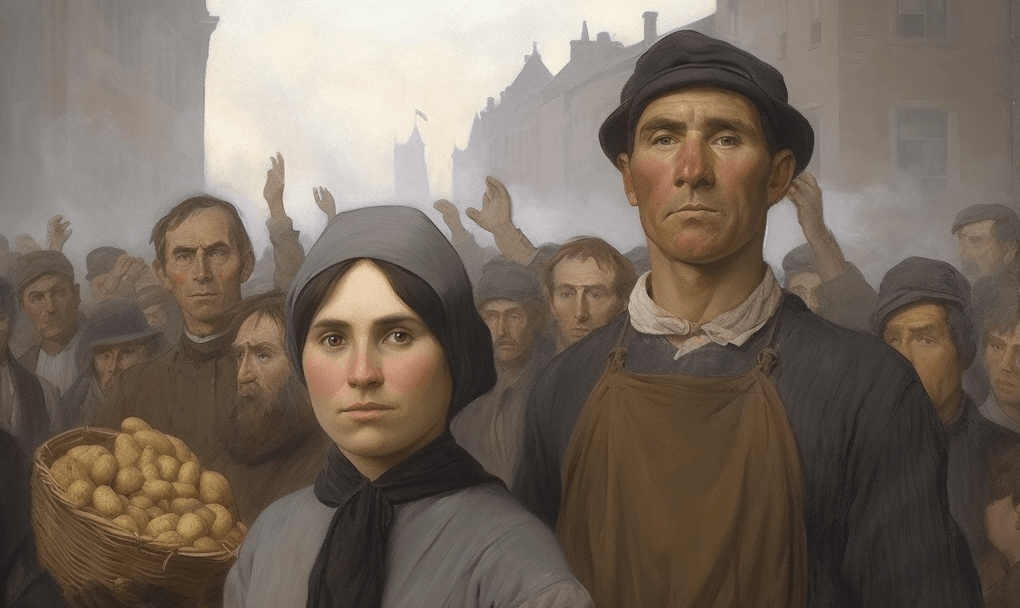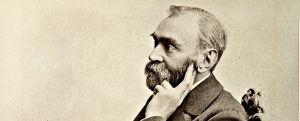I often hear the argument that women were discriminated against because they didn't get the right to vote until 1921 which is an undeniable fact. But the political order of power is not only about gender (the so-called male gender order), but perhaps even more about socio-economic aspects. During the early 20th century, the economy and kinship with the ruling nobility and the upper economic classes was a significant factor in political power.
But what is rarely described is that men from the working class did not have political power and the right to vote especially much earlier than women, which is a fact that is often lost in the description of history. It was politically aware people within above all the left and the liberals who, together with economically weaker social groups, pushed for the political reforms, but they also had support from humanists on the right. These progressives, both men and women, often risked their lives for voting rights reform and to advance democracy and equality.
The leading organization to push the suffrage issue eventually became the National Association for Women's Political Suffrage (LKPR) which brought together local suffrage associations throughout the country. In 1913, the LKPR took the initiative to collect the names of Swedish women to demand the right to vote. Through extensive work, roughly 351,000 signatures could be submitted to the Riksdag in 1914. The names make up about 18 percent of Sweden's women over 18 at the time. Source the National Archives
The history of Swedish women's suffrage is intertwined with universal suffrage
In today's political spectrum, there are forces that want to change the historical description of the fight for the right to vote because it is a foundation and has great significance for our current democracy.
As early as 1862, women with their own debit note were given the opportunity to vote in municipal elections. A few years later, in 1866, female suffrage was introduced for elections to the first chamber in Sweden, the same year that the old parliament was replaced by the bicameral parliament.
A prerequisite for women's suffrage at the time was that the woman was wealthy, which meant that no radical, socially subversive political demands were put forward. The right to vote was based on income, which meant that income affected the number of votes one had and whether one was allowed to vote at all. Companies had the right to vote in the first chamber, and until the beginning of the 20th century, companies could have up to 40 votes. In Sweden, in 1884 the liberal editor FT Borg motioned in the 2nd chamber about the right to vote and eligibility for women on the same terms as for men. The women's suffrage movement lay dormant internationally and was waiting to be awakened in Sweden, which was far from a progressive country in the matter.
In England, the classically liberal economist and philosopher awakened John Stuart Mill a motion for political suffrage for women in 1866. The issue thereafter became the subject of almost annual motions in the English Parliament. In England there were also the infamous suffragettes who refused to pay taxes, but these had no equivalent in Sweden. In the United States, the state of Wyoming was among the first to give women political suffrage in 1860. In the Isle of Man (presumably the Isle of Man), all female householders received political suffrage in 1880, and 12 years later all female taxpayers were also included. In Australia, women gained political suffrage in 1902 and they could also be elected within the Australian Commonwealth of Nations.
7% of Sweden's population had the right to vote at the beginning of the 20th century
In 1902, Sweden's entire population consisted of 5,175,000 people, of which only 382,075 were entitled to vote. That meant that fewer than 7.4% of the entire population had the right to vote. It was only 27.7% of all men over 21 who had the right to vote. Internationally, Sweden's figures were abysmal if compared with, for example, Norway, Denmark, Germany, France and others.
In 1902, the question of proportional elections and a suffrage reform was for the first time under serious discussion in the Swedish parliament. This year, Stockholm's mayor is exercising the liberal CA Lindhagen in the 2nd chamber about an investigation and proposal regarding women's suffrage but the 1st chamber rejects without a vote. It was three members of the constitutional committee who proposed a suffrage reform with a proportional electoral system for electing members of parliament in the 2nd chamber.
However, the proposal goes up in the 2nd chamber and rejects 111 to 64. Two years later, the conservative governor motions CA Sjöcrona in the first chamber on political suffrage for municipal women entitled to vote. It is relevant that his wife was a prominent woman named Bertha Sjöcrona and was described as the governor's wife in the newspaper Idun.
1st Chamber rejects 90 to 49. And so the motions continue to come in over the next few years with initiatives from Sjöcrona, Hörnsten, Lindhagen, Bergström and the Social Democrats Hjalmar Branting etc. In 1907, there was a dormant proposal on municipal eligibility for women except for the county councils.
The political power around the turn of the century
There is an old saying that the apple does not fall far from the tree, but they may also have a connection with the fact that people with common so-called -son names were excluded from virtually all important positions within ministries as well as at regional level (governors).
Who had the political power?
Reading the list of senior officials in various ministries in 1903 is almost as exciting as reading the nobility calendar. It was particularly noteworthy that within the Ministry of Foreign Affairs it was almost a rule to be a count or a baron to be sent to a mission that corresponded to today's ambassadors. For example, we find Baron Bildt in Great Britain and other well-known surnames.
Surnames were strictly regulated in a royal letter from 1705 with the risk of death regarding the conditions for so-called Delinquent to change his name from his so-called father's name. The 1752 law tightened and forbade military personnel to use the names of noble families. The aim was to facilitate the protection of the nobility's financial interests and political power. As late as 1898, the name issue was brought up by P. Wieselgren in order to arrive at a legal order regarding family names.
In 1909, the same year as the Swedish workers' great strike, the right to vote for men was introduced, but the men with the highest income still had the most votes. The length of the vote was made so that if a person, for example, paid 10 kroner in tax, he got one vote. For every 100 notes he got an extra vote until he reached 10 votes. After 1,000 kroner in taxes, he instead received one vote for every 500 started, which meant that a person with an income of 16,000 kroner had 40 votes.
How the rulers explained the undemocratic system to the children
IN reading book for the Swedish public school which came out in 1912 by Lennart Ribbing there is an interesting chapter on municipal suffrage which tries to explain the unfair voting system for children and why some men had 40 votes.
Ribbing believed that it was right that a person who paid more in taxes also had more say and made a lame analogy if a group of people bought a camera and invested different amounts of money in the project.
In addition, Ribbing justified the injustice by saying that no one could indeed vote for more than a tenth of the municipality's vote! The 10 percent rule meant that a big boss could theoretically be allowed to give up some of his 40 votes if there were very few people in the municipality who had the right to vote. The textbook did not mention the example that the same big patron could have several companies that each gave 40 votes and also probably had some well-paid people in their salary who also had many votes...
Ribbing concluded the paragraph on the municipal right to vote with the sentence:
One thing, however, should always be borne in mind, and that is that no law can exist so perfect that it replaces good will.
In 1914, the right-wing extremists organized the Peasants' March on February 6, where they set the course for increased military burdens, greater power for the monarchy and the right. The king violated the practice of parliamentarism in the matter of defense and the liberal Staaf government protested. The manor coup succeeded and the king refused to follow the constitution and tell the government what he intended to do in politics. A right-wing government was formed with Hjalmar Hammarsköld as prime minister and KA Wallenberg as foreign minister. The organization Försvaret was primarily a right-wing extremist organization with large resources that launched propaganda for increased militarism. Gustav V and Queen Victoria worked for Sweden to participate in the war on Germany's side. source CJ Björklund "Anarchist and Agitator"s. 174
Feared an attack on the king
In 1916, at a horse show at Cirkus on Djurgården, there was fear of an attack on King Gustav V. In 1917, there was some derisive talk about the potato revolution in Sweden. It was about food and the women met and sometimes organized their own demonstration marches. Even among the navy and the army meetings were held with a revolutionary atmosphere. According to the police, it was the Young Socialists who planned an attack on the king and the rumor was spread to Germany in the newspaper "Berliner Tagblatt", which was denied. Machine guns were mounted on the roof of the royal castle. Source CJ Björklund p. 184
Could the Russian revolution spread to Sweden?
It was not until 1918 that equal voting rights were proposed for men over the age of 21. The background to the reform was to some extent the Russian revolution the year before and that those in power were afraid that similar socialist revolutions would spread to Sweden. In order for a man to have the right to vote, he was also required to complete military service. Although this requirement would later be removed.
However, citizens who were cared for by the poor were excluded from voting. In order to be elected to the first chamber, certain wealth and income conditions applied as late as 1933. According to the People's Calendar from 1927 (which was a socialist calendar), it was stated that the law on December 23 made the age limit over 200,000 Swedish men of legal age and women were deprived of their municipal suffrage and 600,000 men of legal age were deprived of their right to vote in the county council elections. In the same book it was stated that the right to vote in elections to the second chamber accrues to every man and woman who is a Swedish subject and has reached the age of 23 at the latest during the next calendar year. It was not until 1945 that even those who lived on the social allowance of that time got the right to vote.
Sources:
Wikipedia
Almanac for All Years 1903 p. 83
Almanac for All Years 1905 p. 176
Almanack för Alla år 1909 p. 181 f title some data and figures concerning the women's suffrage movement
Reading book for the Swedish public school by Lennart Ribbing
The illustrations in this post are AI generated
http://www.ub.gu.se/kvinn/portaler/rostratt/offentligt/





Factual and interesting, thumbs up!